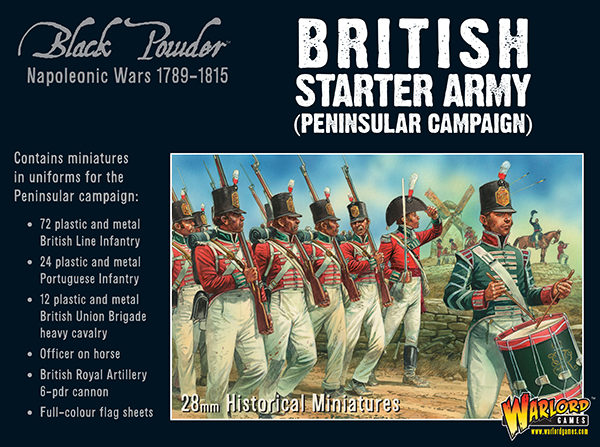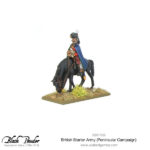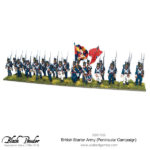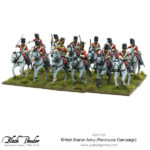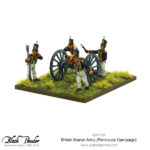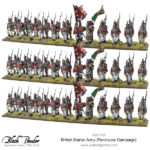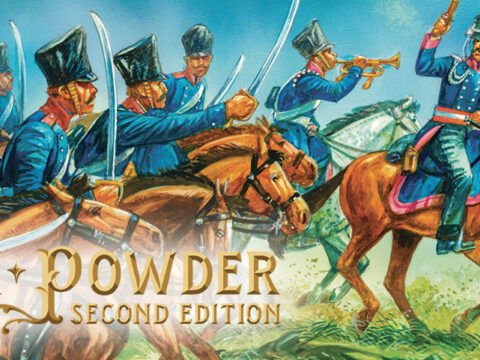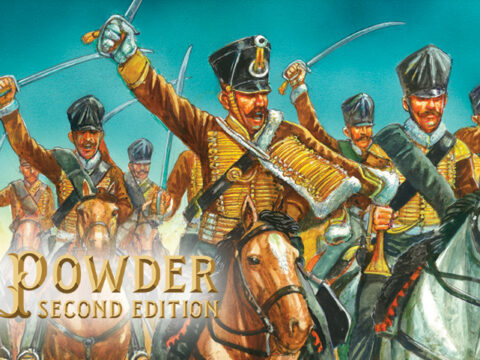A quick preview of the Peninsular Campaign 1809-1814
The Spanish Ulcer
Napoleon turned to attack Britain where ‘the nation of shop keepers’ would feel it the most – trade. He believed an invasion would be possible once economic isolation had drained the blood from the ‘vampire of the north’ and caused economic collapse. Napoleon issued the Berlin Decree forbidding continental trade with Britain, but Portugal, Britain’s oldest ally, openly refused to comply.
Sweetened by the promise of Portuguese territory, Spain agreed to support a French invasion of Portugal. In October 1807, General Junot – at the head of 25,000 men – moved through Spain and invaded Portugal, capturing Lisbon with ease and sending the Portuguese royal family into exile in Brazil. In early 1808, under the cover of supporting Junot’s invasion, Napoleon positioned over 80,000 men in Spain, commanded by the most flamboyant character of the period, his brother-in-law Joachim Murat. Murat’s forces quickly occupied key strong points and took Madrid. Napoleon then coerced the Spanish Royal family to abdicate, replacing them with his brother Joseph. Initially, Spanish resistance was limited, but French atrocities fanned the flames of resistance, although a rebellion in Madrid was brutally crushed by Murat.

Spanish forces hold their ground.
Spanish forces marched out of Portugal and by the end of July had met and held their own against the French on several occasions. One victory was in southern Spain on 23rd July 1808, when General Castaños surrounded and forced 18,000 Frenchmen under General Dupont to surrender at Baylen. This victory sent tremors through Europe, the French were not invincible on the battlefield and it was the unlikely Spanish who had demonstrated it. Appeals for British assistance were answered on 1st August 1808 when a force of 14,000 men under Lieutenant General Sir Arthur Wellesley landed at Mondego Bay, just north of the Portuguese capital. Striking out for Lisbon, Wellesley met and defeated a small harassing French force under Delaborde at Roliça on the 17th August. He then turned towards the coast to protect the landing of further reinforcements. On the 21st August, Junot attacked Wellesley’s position, centred on Vimeiro Hill. The Battle of Vimeiro saw the first clash of true French Napoleonic tactics against the British defensive line. French columns were thrown back by the devastating firepower and steadiness of the British infantry. The battle also saw something that was also to be a theme of the battles between the British and French: in pursuit, the British cavalry went out of control, and were thrown into confusion.
The tactical victory at Vimeiro was thrown away strategically when Wellington was prevented from following up the enemy by his superior officer, the sixty year old Sir Hew Dalyrymple. To add insult to injury, the shameful truce at the Convention of Cintra saw Junot’s army, with all its weapons and loot, repatriated to France in British ships. Dalrymple and astoundingly Wellesley were recalled to Britain to answer a court of inquiry about the conduct of the war, leaving Lieutenant General Sir John Moore in command of British forces.
“The war can be finished in a single operation but it must be properly coordinated and I must be there,” Napoleon exclaimed at the events in Spain. But he did not go to Spain alone, he took along the Imperial Guard, three army corps, the cavalry reserve and one Polish, one German and two Italian divisions. Napoleon now hurled these 200,000 combatants against the Spanish in the north, smashing their forces aside and taking Madrid. Moore, manoeuvring to prevent the French entering southern Spain, was forced to retreat towards Corunna due to serious French pressure. The retreat ended with the evacuation of the Army by the Royal Navy during the 16th and 17th of January 1809, and the fighting at Corunna before the evacuation sadly cost Moore his life. With the British sent packing, Napoleon, concerned by rumours of a conspiracy in Paris and the threat of Austrian mobilisation, returned to his capital.
Wellesley Exonerated
In April 1809, an exonerated Wellesley returned to Portugal and resumed command of all British and Portuguese forces. On the 12th of May, he defeated Marshal Soult at Oporto, a victory that allowed Wellesley to enter Spain and combine with the Spanish army under General Cuesta. The battle of Talavera on the 27th and 28th of July saw Wellesley contain a French army – under King Joseph Bonaparte and Marshal Victor – then force it from the battlefield. Yet Talavera was a costly victory, and with Soult threatening to cut Wellesley off from Portugal, he was forced to retreat. Wellesley, now Viscount Wellington of Talavera, was not followed and in the winter of 1809/1810 he concentrated on preparing a robust defensive network to protect Lisbon. Lieutenant-Colonel Sir Richard Fletcher, Royal Engineers was the overseeing expert of the construction of what became known as the Lines of Torres Vedras.

French troops march along the dusty Spanish roads.
1810: Massena
In July 1810, Marshal Massena invaded Portugal with 60,000 men, determined to smash the British once and for all. The first action at the Coa in the same month saw the British Light Division narrowly escape disaster at the hands of 20,000 French under Marshall Ney. In September, Massena was defeated after attacking Wellington in a strong position at Bussaco, but he was still able to force the British back behind the ‘Lines’. Massena soon realised that he would not be capable of penetrating Wellington’s defences; a stalemate only ended when Massena’s army – suffering from disease and a lack of supplies – was forced to retreat.
The first action of 1811 saw a French force beaten at Barrosa in March, French ambition being thwarted further by defeat at Fuentes de Oñoro and Albuera in May. This precipitated a French withdrawal from Portugal and the now-disgraced Massena’s replacement by Marshal Marmont.
1812: Advance into Spain
In January 1812, Wellington began his advance into Spain, and the fortresses of Ciudad Rodrigo and Badajoz soon fell. Although outnumbered by the French, Wellington enjoyed a strategic and tactical advantage as Spanish forces pinned down a large proportion of French formations within the theatre. On the 22nd of July, Wellington inflicted a severe defeat upon Marmont at the battle of Salamanca, but eventually had to retreat to Ciudad Rodrigo when threatened by a combined force under Joseph, Soult and Suchet.
In June, the French invasion of Russia ended in disaster for Napoleon, but for Wellington, it was a different matter. The French, under increased pressure by both regular and guerrilla Allied forces, could not afford fresh troops for the Peninsula, whilst Wellington was continually fed with reinforcements. In the summer of 1813, Wellington went on the offensive and on the 21st of June he routed a French army commanded by Joseph at the Battle of Vitoria. Vitoria was a tonic for Britain’s allies, recently defeated at Lützen, galvanising them to renew their efforts.
1814: Napoleon Capitulates
Wellington reached the Pyrenées in July. The French counter-attacked and had some success at the battle of Maya, but this was reversed by a British victory on the 28th July at Sorauren. In October, Wellington’s Peninsula veterans crossed into France and in February 1814 the British defeated Soult at Orthez. On 31st March 1814, the Allies triumphantly entered Paris and six days later Napoleon Bonaparte abdicated as Emperor of France.
Fighting continued until news of Napoleon’s abdication reached Wellington, too late for the French army defeated near Toulouse. On the 17th of April Soult signed an armistice, bringing the long, bitter and hard-fought Peninsular War to an end. Huzzah for Albion!
This account is extracted from Albion Triumphant volume 1 – The Peninsular Campaign, where you’ll find detailed army lists and scenarios for playing the key battles with the Black Powder rules, as well as a wealth of historical information and glorious photography.
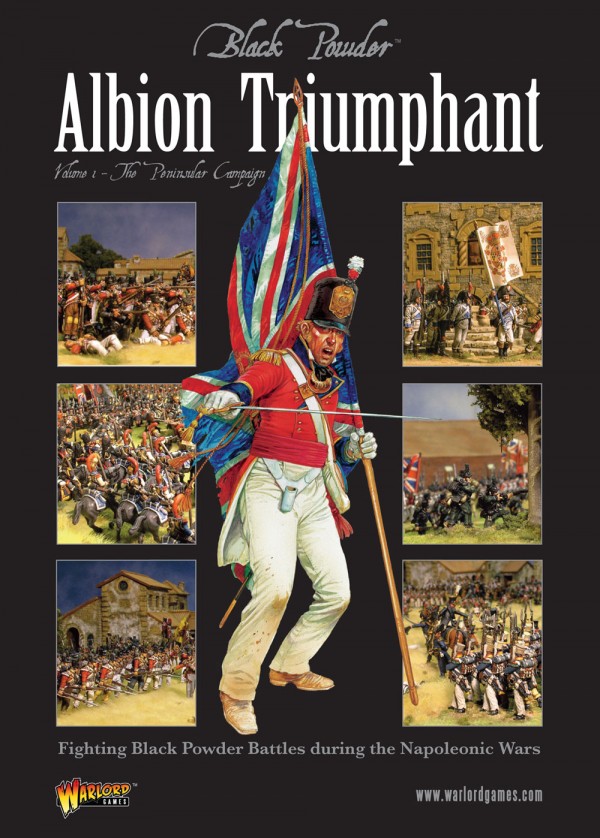
British Peninsular campaign starter army
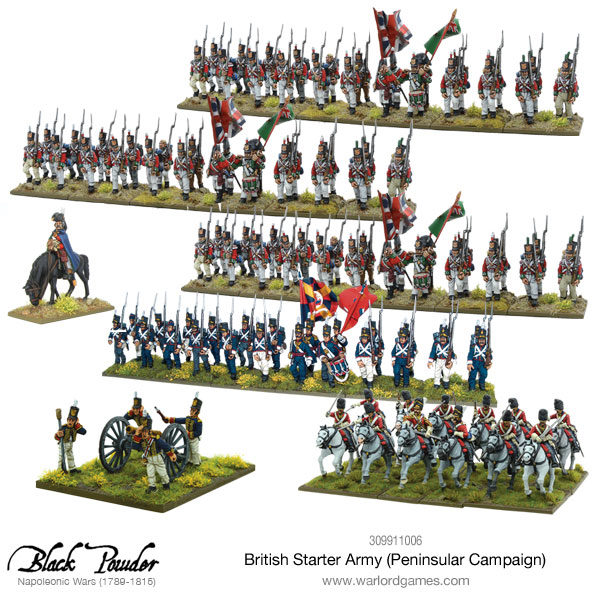
The Heavy Cavalry come with the correct heads to represent the dragoons – Some of you eagle-eyed historians may have noticed the Scott’s Greys in the picture above. These are made from the Union Brigade Cavalry box which will also allow you to make Dragoon Guards. We’re so busy the studio hasn’t had time to paint them!
- 72 Plastic and metal British Line infantry
- 24 Plastic and metal Portuguese infantry
- 12 plastic and metal British Union Brigade heavy cavalry
- Officer on horse
- British Royal Artillery 6-pdr cannon
- Full-colour flag sheets
Defend the line at Vimeiro Hill. With you and Wellesley in charge the thin red line of British and Portuguese troops will hold, but can you keep your cavalry in check?
